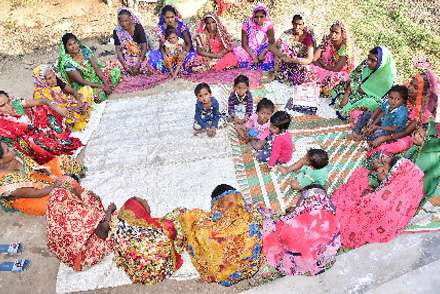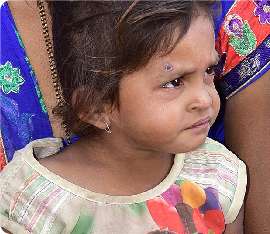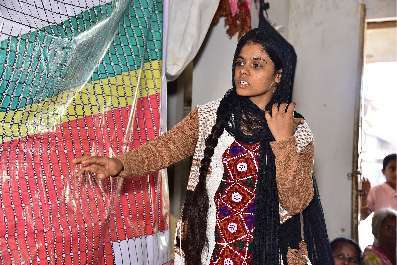Health Equity Through Community Partnership
Rural areas have histories, economies, and cultures that differ from those of cities and from one rural area to another. Understanding these differences is critical to taking steps to improve health and well-being in rural areas and to reduce health disparities among rural populations. Community access to medical services, monitoring the quality of public health services, promoting the health and wellbeing of pregnant women, mothers, children under five, reproductive and health rights of adolescents and the differently abled were identified by Aatapi and community partners as needs to addressed.

Aatapi’s approach to health underpins the need to look at this sector in a holistic framework, where physical, mental and social wellbeing are considered to attain an optimal state of health and wellbeing.
Aatapi believes that effective solutions for enhancing health services are in the hands of the community. Community-based monitoring of services by community-based organisations is fundamental to Aatapi’s work in this sphere.
Interventions
1
Strengthening community-based organisations to access health rights and entitlements
2
Enhancing maternal and child health services in 9 villages – with a focus on anaemia, malnutrition and Mamta Divas
3
Strengthening community participation platforms such as the Gram Sanjeevani Samiti to enhance health services
4
To build a cadre of Arogya Saathis, para health workers, to counsel and guide people about primary health care and to facilitate access to public health services
5
To build a cadre of adolescent and youth leadership to address Reproductive and Health Rights of Adolescents with special focus on adolescents with disabilities.
Aatapi plans to expand the scope of these programmes in other areas and villages in consultation with community partners.
Outreach

Women, adolescents and children from 9 villages in Jambusar taluka

100 SHGs – 1200 women of Self-Help Groups

500 children in anganwadis, this includes close monitoring of 50 malnourished children.

200 to 250 pregnant and lactating women, this includes close monitoring of 50 high risk pregnant women.

11 boys’ adolescent groups and 10 adolescent girls’ groups with 300 plus members.
Adolescent Rights and Responsibilities
Adolescents with disabilities and their health rights is an area of gross neglect. Aatapi in collaboration with SAHAJ engages with adolescent boys and girls, with and without disability to create awareness about Sexual and Reproductive Health Rights. 11 groups of adolescent boys and 10 groups of girls with 300 plus members have been formed. Their leadership and community monitoring skills have been sharpened through capacity building.
A cadre of leaders – Peer leaders have been strengthened to create awareness about health rights. The Peer Leaders also support adolescent with disabilities in accessing their health rights.
